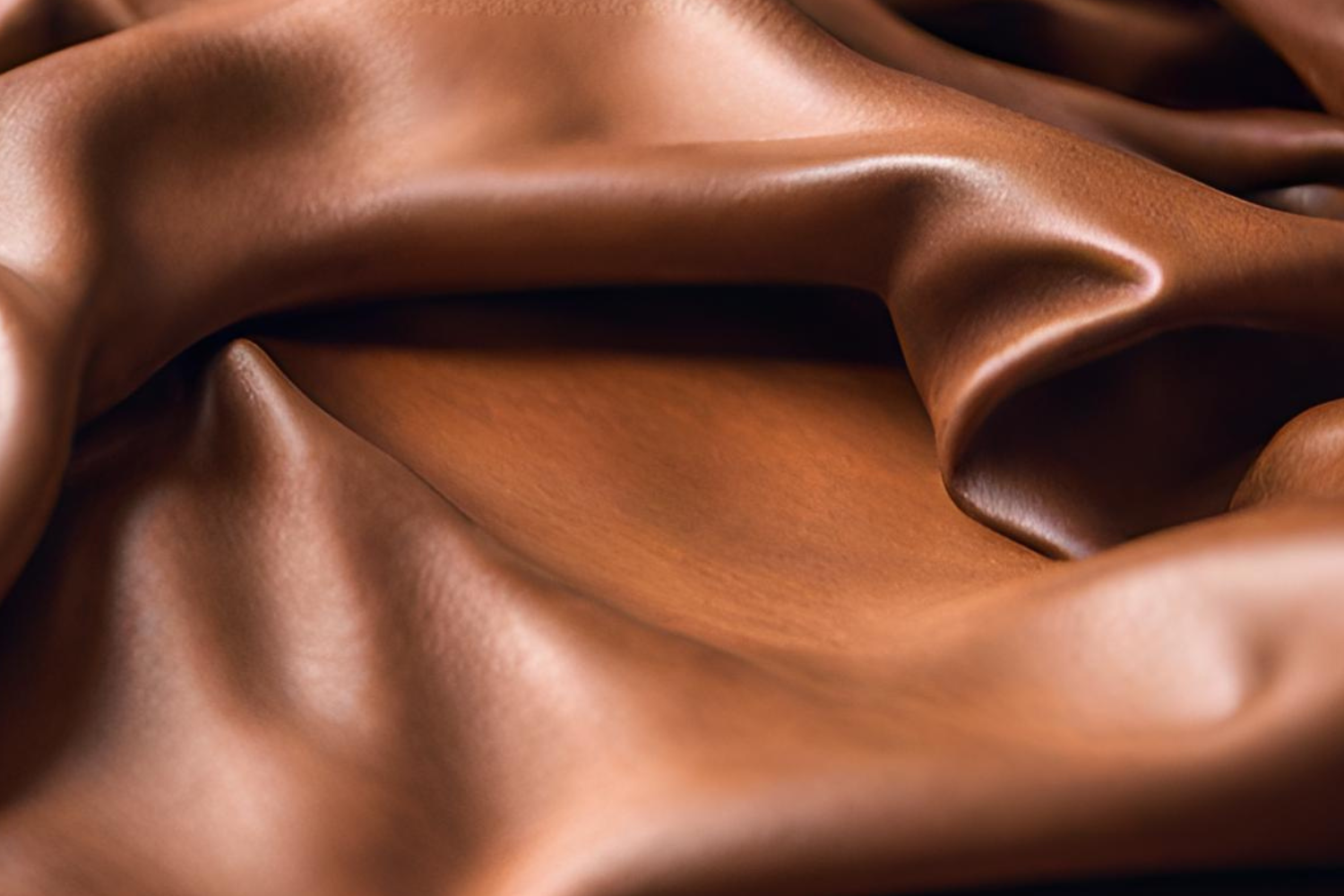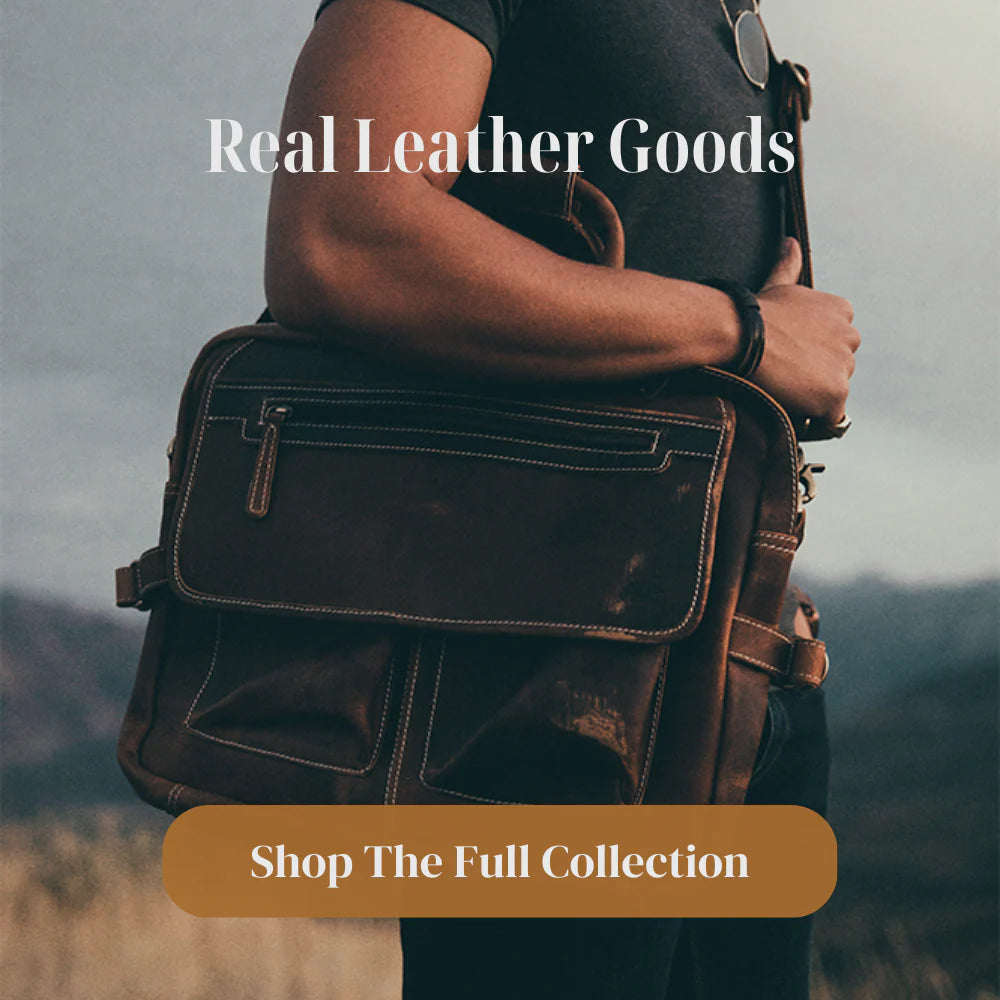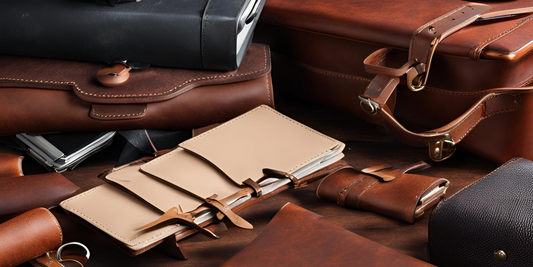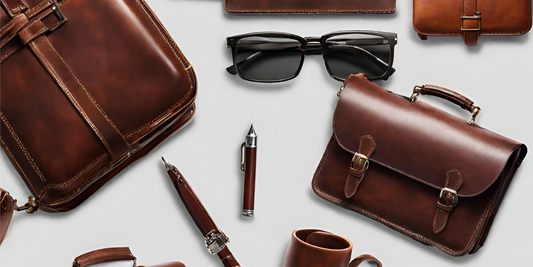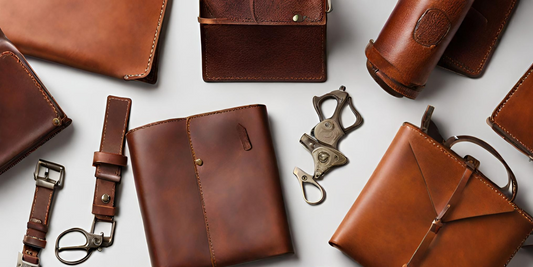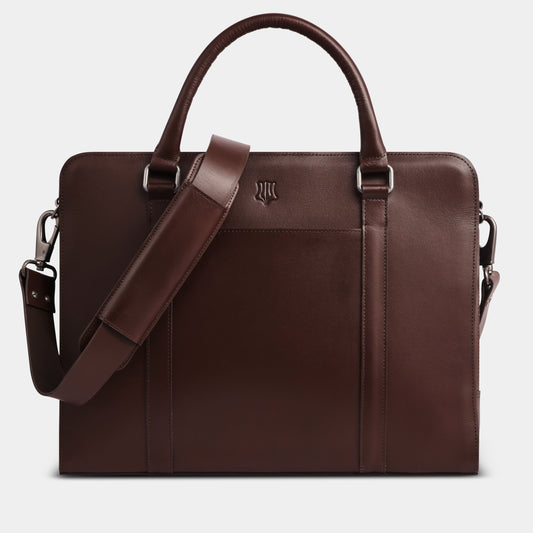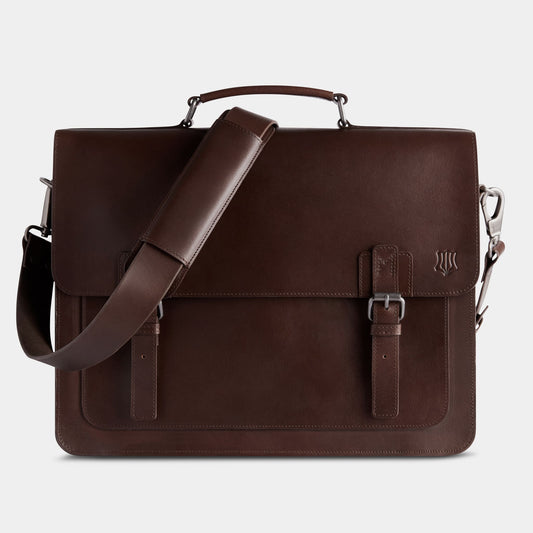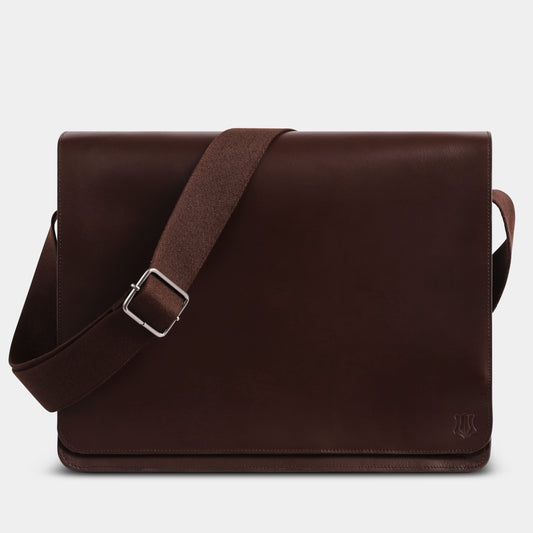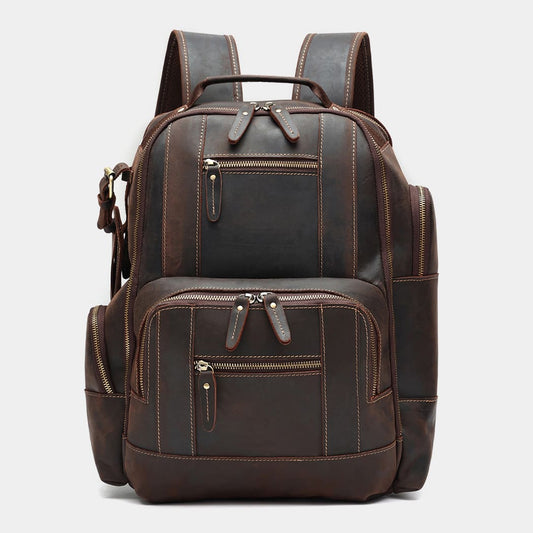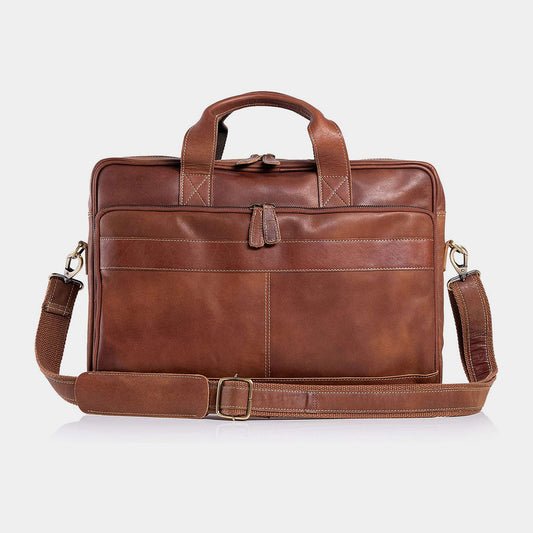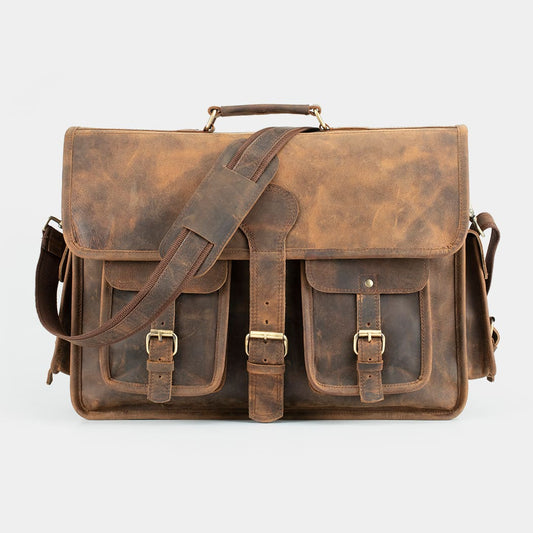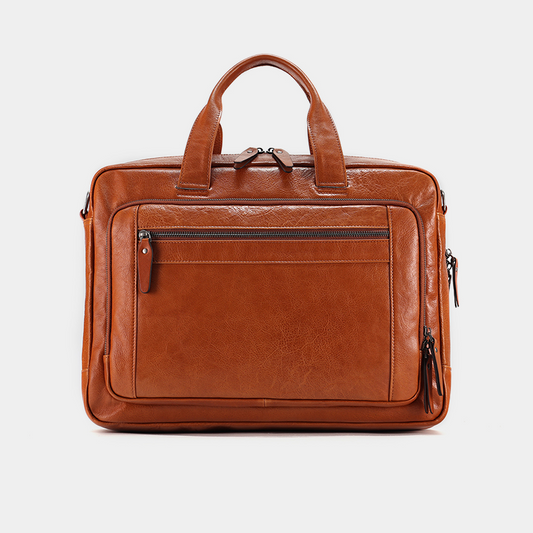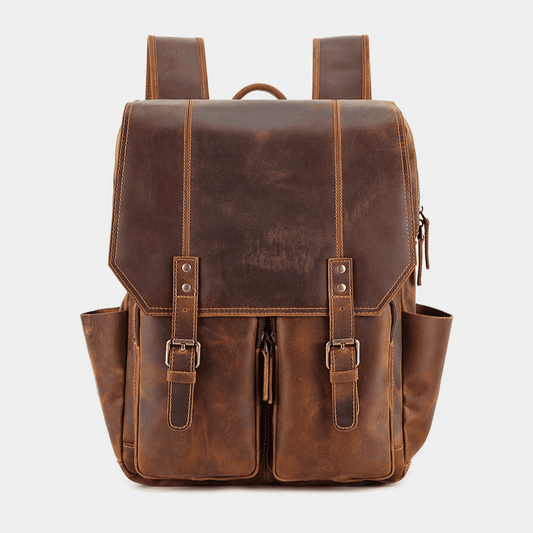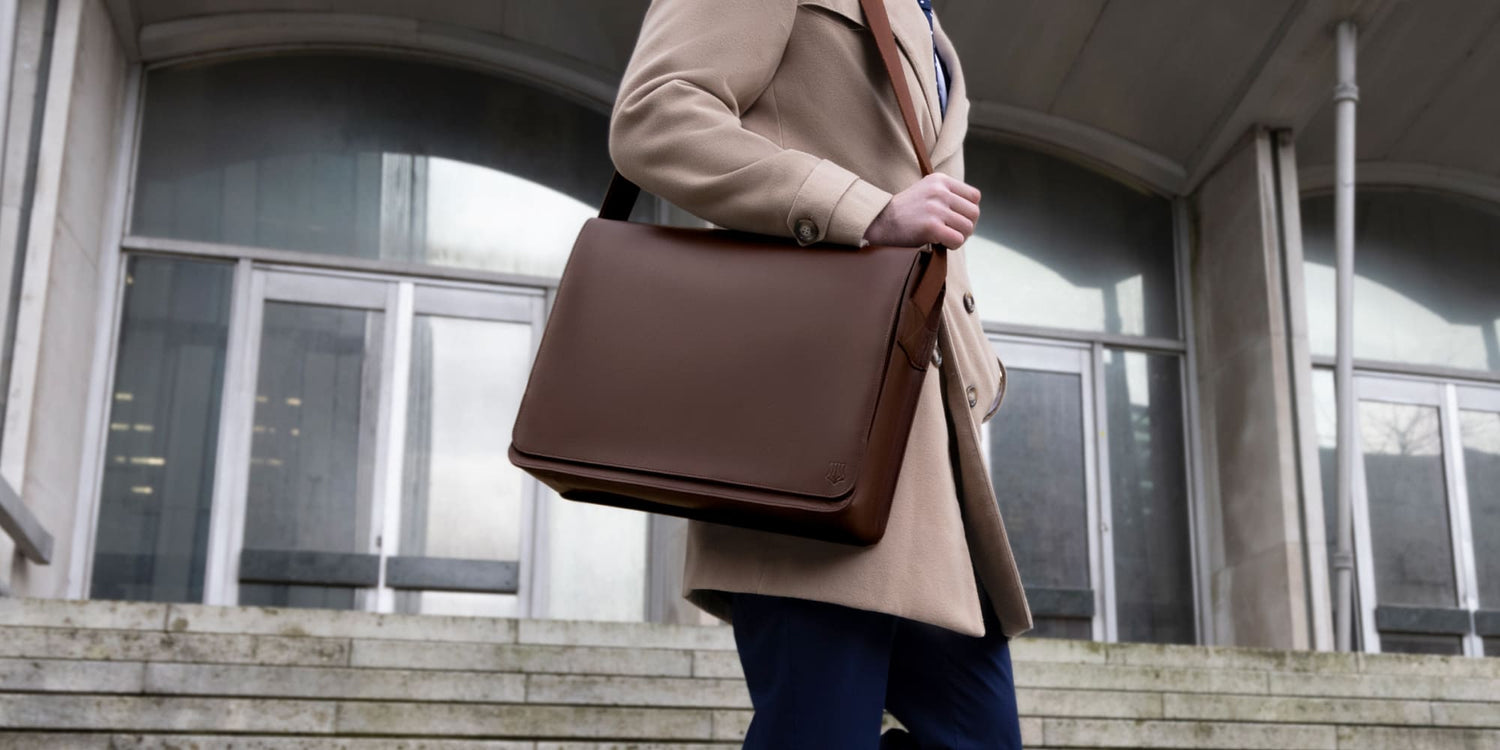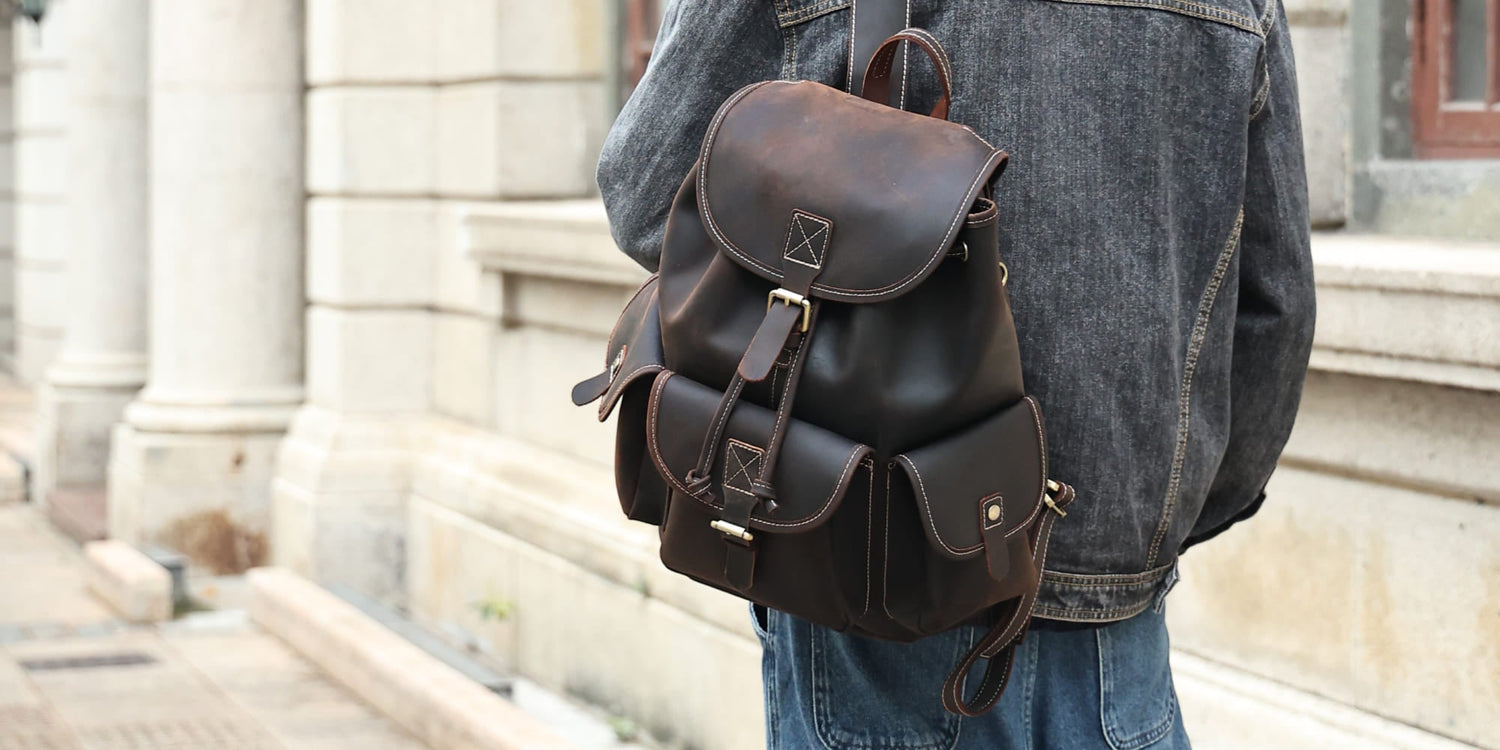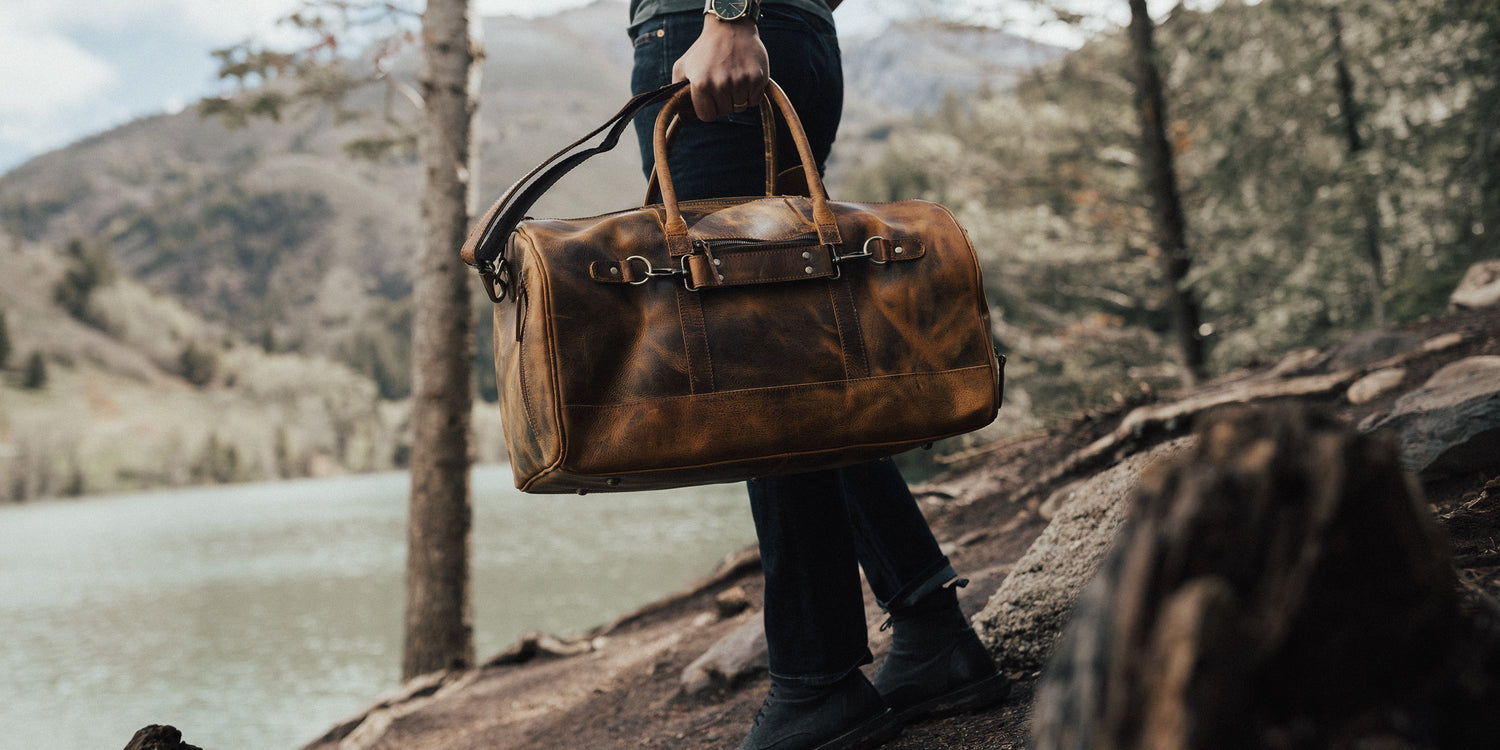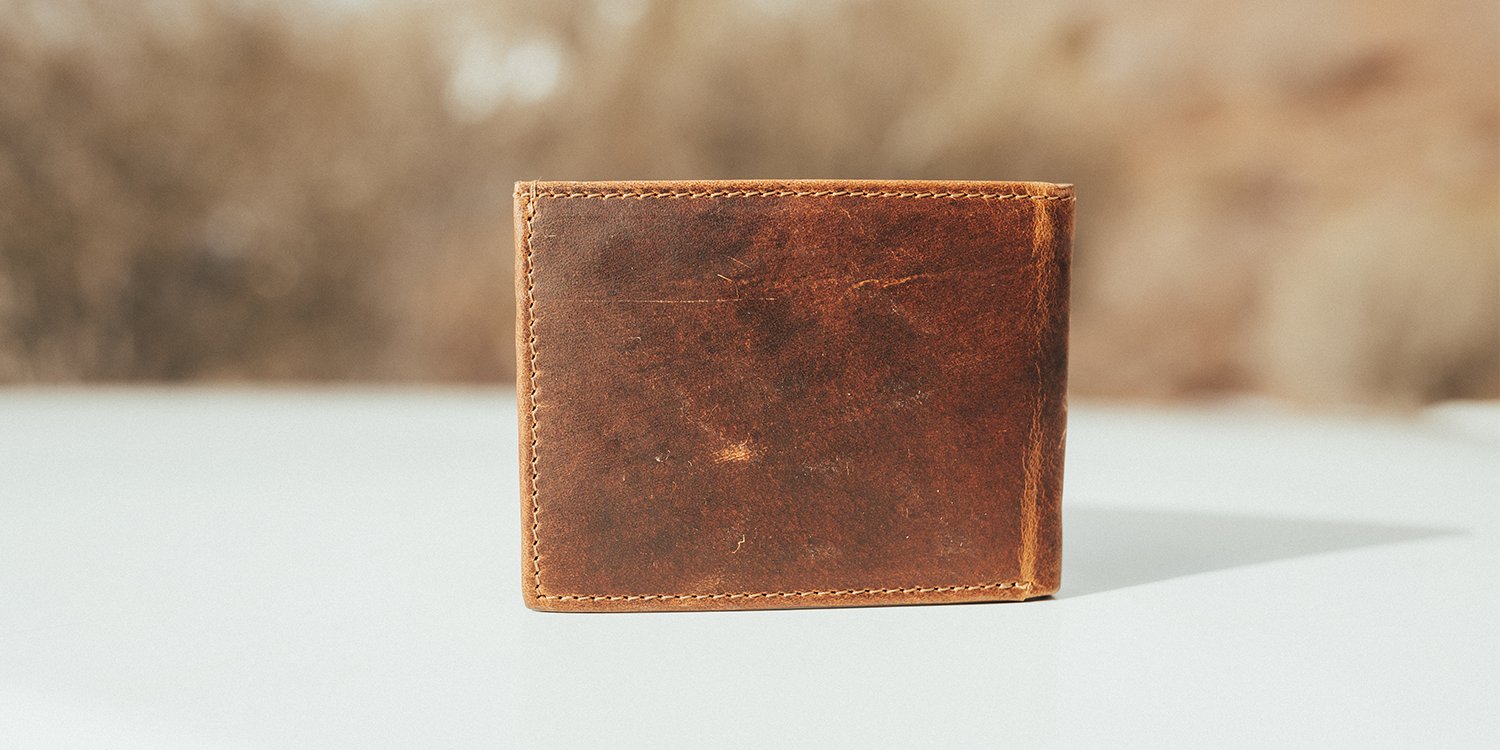Leather is more than just a material; it's a silent hero in our daily lives.
But where does it come from?
Join us on a journey to uncover the secrets behind leather's origin and transformation.
From humble animal hides to exquisite leather goods, we'll explore every step of the fascinating process.
Whether you're a seasoned enthusiast or a curious newcomer, get ready to discover the captivating world of leather craftsmanship.
What is Leather?
Leather is a versatile and enduring substance that plays a vital role in our lives.
Derived from animal skins, leather is a natural material prized for its strength, durability, and unique aesthetic qualities.
At its essence, leather is composed of collagen fibers, which give it its characteristic strength and flexibility.
Unlike synthetic materials, which can feel artificial and lack the warmth of natural fibers, leather has a tactile quality that adds a sense of luxury to any product it adorns.
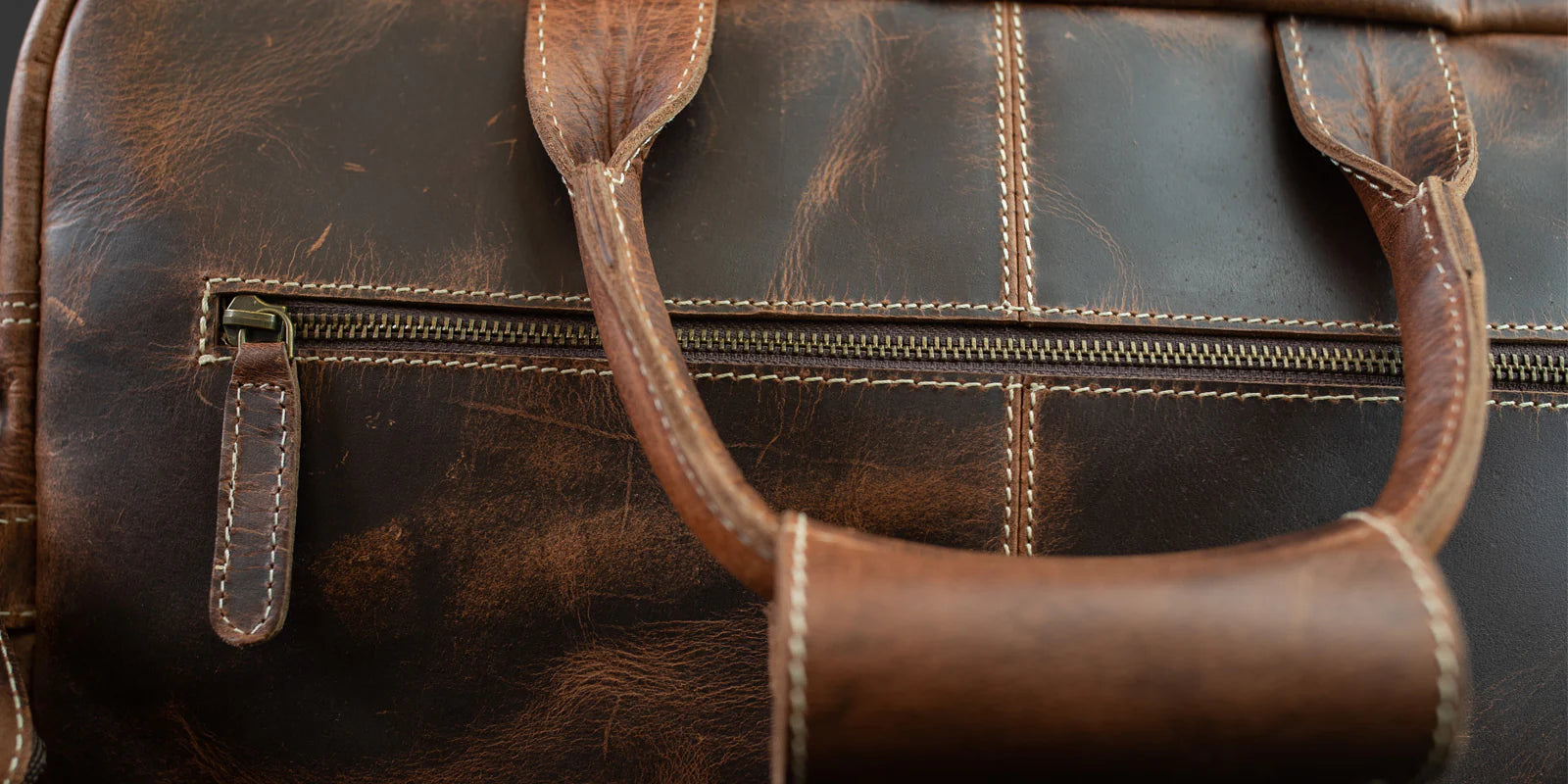
Types of Leather
There are various types of leather, each with its own characteristics and uses.
Full grain leather, for example, retains the outermost layer of the hide, preserving its natural grain and texture, while top grain leather is sanded or buffed to remove imperfections, resulting in a smoother surface.
Other types of leather, such as corrected grain and bonded leather, are created using different processes and may not possess the same quality and durability as full grain or top grain leather.
Leather Patina
One of the most appealing aspects of leather is its ability to develop a rich patina over time.
As leather ages, it takes on a unique character, with wrinkles, scars, and other imperfections adding to its beauty and charm.
This patina not only enhances the aesthetic appeal of leather products but also serves as a testament to their longevity and enduring quality.
In addition to its aesthetic qualities, leather is also prized for its practicality and versatility.
From briefcases and duffles to furniture and automotive upholstery, leather can be found in a wide range of applications, each showcasing its durability and timeless appeal.
Overall, leather is a remarkable material that combines beauty, functionality, and sustainability, making it a cherished choice for discerning consumers around the world.
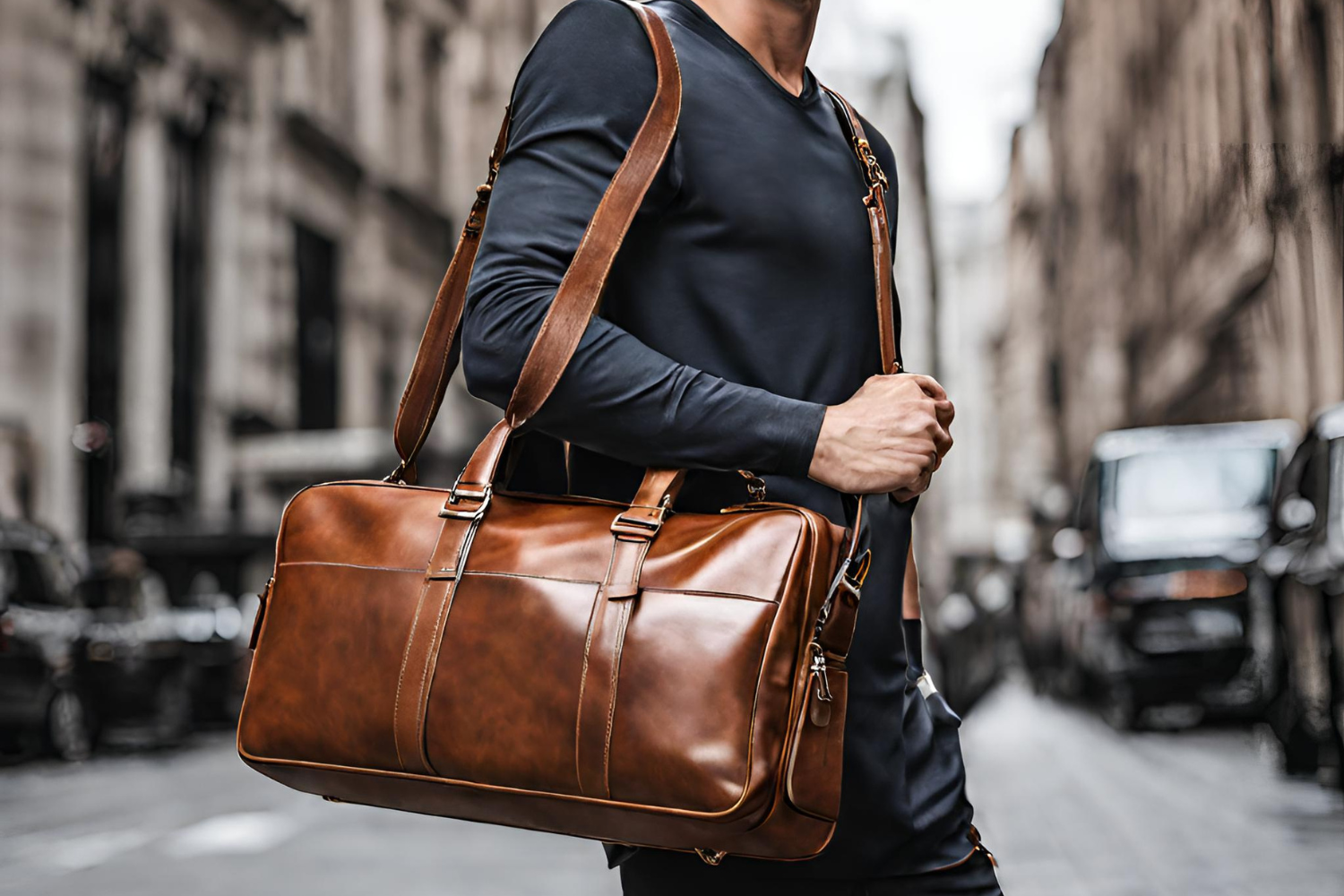
The Global Leather Industry
The global leather industry is a dynamic and multifaceted sector that plays a significant role in the global economy.
Worldwide Production
According to recent statistics, the global leather industry produces over 23 billion square feet of leather annually.
This staggering amount of leather is utilized in a wide range of products, including footwear, apparel, automotive upholstery, and furniture.
Where is Leather Made?
The leather industry is dominated by several key players, including countries like China, Italy, Brazil, and India.
China is the world's largest producer and exporter of leather, accounting for a significant portion of global leather production.
Italy is renowned for its high-quality leather goods and craftsmanship, with Italian leather products enjoying a reputation for luxury and sophistication.
Brazil and India are also major players in the global leather industry, with both countries boasting significant leather production capabilities and exporting leather products to markets around the world.
The United States and Russia also produce large amounts of leather, but are considered minor players in the world market.
American made leather is much in demand, however the economics of the US leather industry are usually prohibitive for manufacturers and customers.
In terms of trends, the global leather industry is experiencing a shift towards sustainability and ethical practices.
Consumers are increasingly demanding transparency and accountability from leather manufacturers, prompting many companies to adopt eco-friendly production methods and adhere to strict ethical standards.
Economic Significance
The leather industry is a vital contributor to employment and commerce in many countries around the world.
In developing countries, leather production provides livelihoods for millions of people, from farmers who raise livestock to tannery workers who process hides.
Furthermore, leather exports generate substantial revenue for many countries, contributing to economic growth and development.
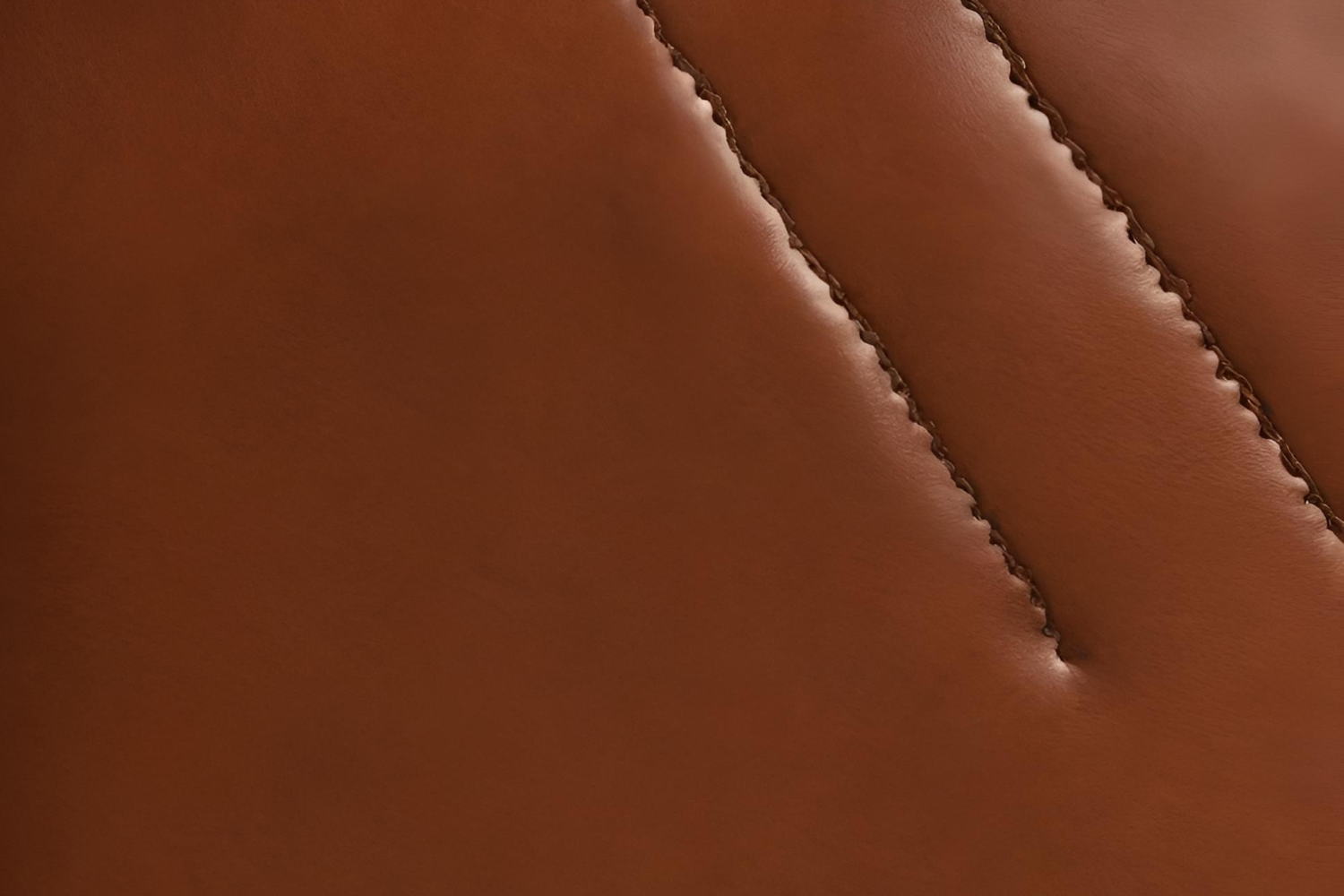
The Source: Animal Hides
Animal hides serve as the raw material for crafting leather, offering a glimpse into the natural world's intricate beauty.
Hides come from a variety of animals, with cattle, sheep, and goats being among the most common sources.
Each type of hide possesses unique characteristics that influence the quality and properties of the resulting leather.
Types of Hides
Many types of animal hides are used in the leather industry.
For example, cattle hides are known for their strength and durability. Cow leather is ideal for products that require robustness, such as shoes, bags and belts.
Cowhide and bovine leather accounts for around 65% of all leather produced worldwide.
Sheepskin, on the other hand, is prized for its softness and suppleness, making it a popular choice for luxury goods like jackets and gloves.
Goatskin, with their fine grain and natural resilience, are often used to create high-quality leather products, such as handbags and wallets.
In addition to cattle, sheep, and goats, other hides, such as pigskin and deerskin are also used in specialist leather production.
Exotic species like alligator, kangaroo, stingray and ostrich also contribute to the diverse range of leather available in the market.
Quality of Hides
The quality of leather is influenced by various factors, including the breed, age, and environment of the animal from which the hide is sourced.
For example, hides from younger animals tend to be softer and more flexible, while those from older animals may be thicker and more durable.
Similarly, the breed of the animal can impact the texture and grain pattern of the leather, with some breeds producing hides that are smoother and more uniform than others.
The environment in which the animal is raised also plays a significant role in determining the quality of the hide.
Animals raised in harsh climates may develop thicker hides with more pronounced grain patterns, while those raised in more temperate regions may produce hides that are softer and more supple.
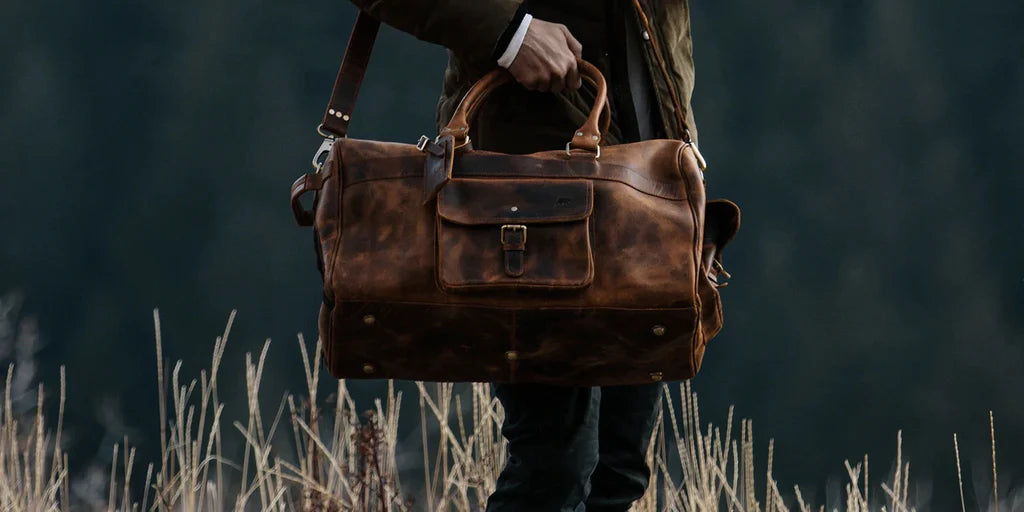
The Tanning Process
The tanning process is like a magical alchemy that transforms raw hides into the supple, durable material we know as leather.
Leather making is a incredible difficult skill, often passed down from father to son for generations.
It's a journey that begins with the removal of hair and flesh from the hides, a process known as fleshing.
Next, the hides are soaked in a solution of water and lime to loosen the fibers and remove any remaining flesh.
Once cleaned, the hides are treated with a tanning agent, which penetrates the fibers to stabilize and preserve them.
Vegetable Tanning vs Chrome Tanning
There are various methods of tanning, each yielding leather with different characteristics.
One common method is vegetable tanning, which uses tannins derived from plant sources, such as tree bark and leaves, to tan the hides.
Vegetable-tanned leather is known for its natural appearance and earthy smell, making it a popular choice for products like belts and saddles.
Another method is chrome tanning, which uses chromium salts to tan the hides.
Chrome-tanned leather is softer and more supple than vegetable-tanned leather, making it suitable for products like shoes and handbags.
In addition to vegetable and chrome tanning, there are also alternative methods, such as alum tanning and brain tanning, which utilize different tanning agents to achieve unique results.
Regardless of the method used, the tanning process typically takes several weeks to complete, during which the hides are carefully monitored and treated to ensure optimal results.
Environmental considerations are also an important aspect of the tanning process, with many tanneries implementing eco-friendly practices to minimize waste and reduce pollution.
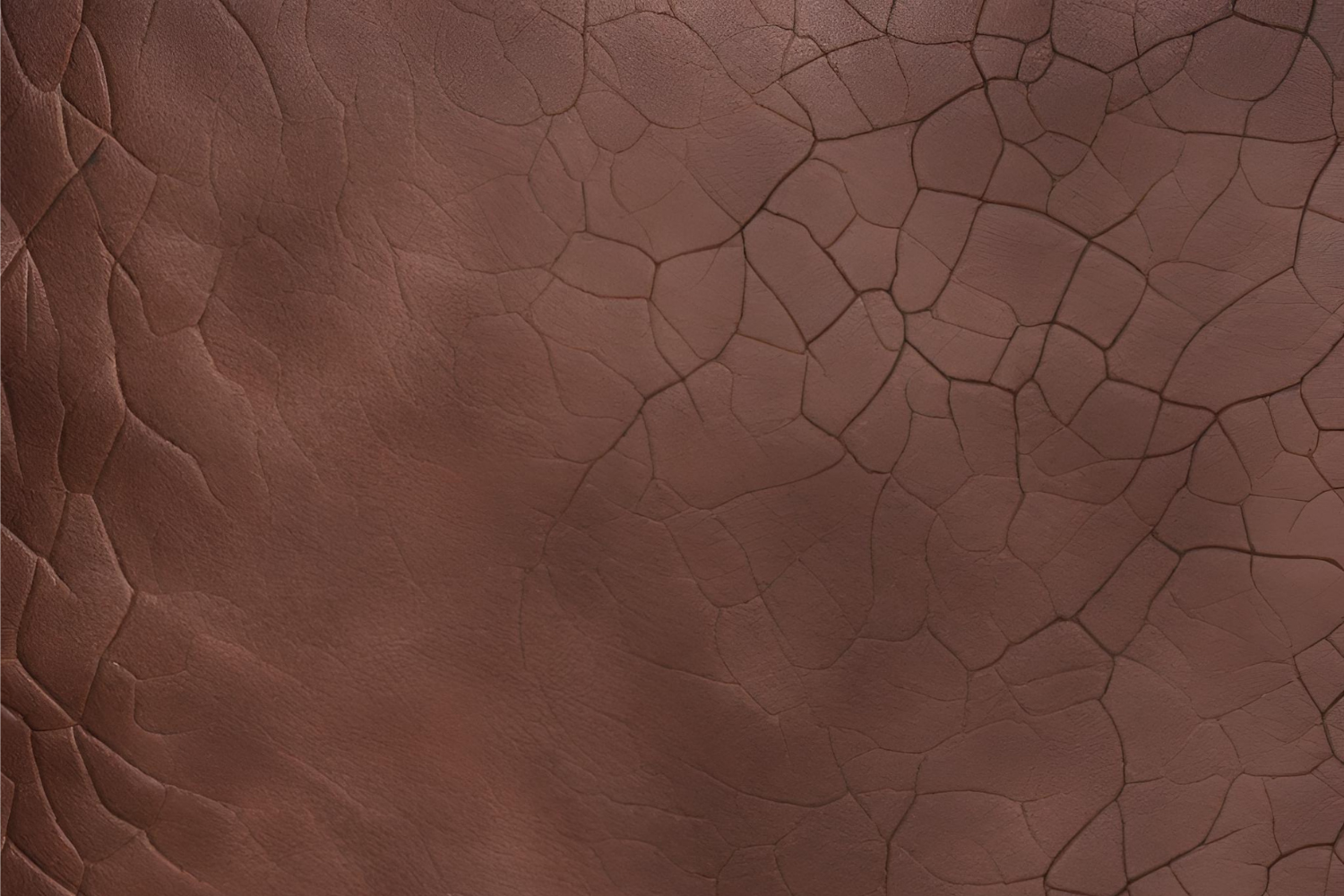
Leather Grading and Quality
Leather grading is like a secret code that reveals the hidden treasures within each hide.
Understanding leather grades is essential for discerning consumers who want to ensure they're getting the best quality products.
Grades typically range from top tier to lower tier, with each grade reflecting the quality of the leather and the craftsmanship involved in its production.
Full Grain Leather
At the top of the hierarchy is full grain leather, which retains the outermost layer of the hide and showcases its natural grain and imperfections.
Full grain leather is prized for its durability and character, making it the preferred choice for high-end products.
Top Grain Leather
Next in line is top grain leather, which has been sanded or buffed to remove imperfections and create a smoother surface.
While not as prestigious as full grain leather, top grain leather still offers excellent quality and durability.
Other Grades
Below top grain leather are various lower-grade leathers, such as suede, genuine leather, corrected grain and bonded leather, which may not possess the same quality and longevity as their higher-grade counterparts.
Other processes such as dyeing and applications of acids are permitted on these leathers to alter them in some way.
Grain, Texture and Finish
When evaluating leather quality, it's essential to consider factors such as grain, texture, and finish.
Grain refers to the pattern of pores and wrinkles on the surface of the leather, with full grain leather typically exhibiting a more natural and irregular grain pattern.
Texture refers to the feel of the leather, with high-quality leather feeling soft and supple to the touch.
Finish refers to the surface treatment applied to the leather, with premium finishes enhancing the leather's appearance and durability.
To identify quality leather, consumers can look for telltale signs such as tight grain, uniform color, and a pleasant smell.
Ultimately, leather grading is a complex and nuanced process that requires careful consideration of various factors.
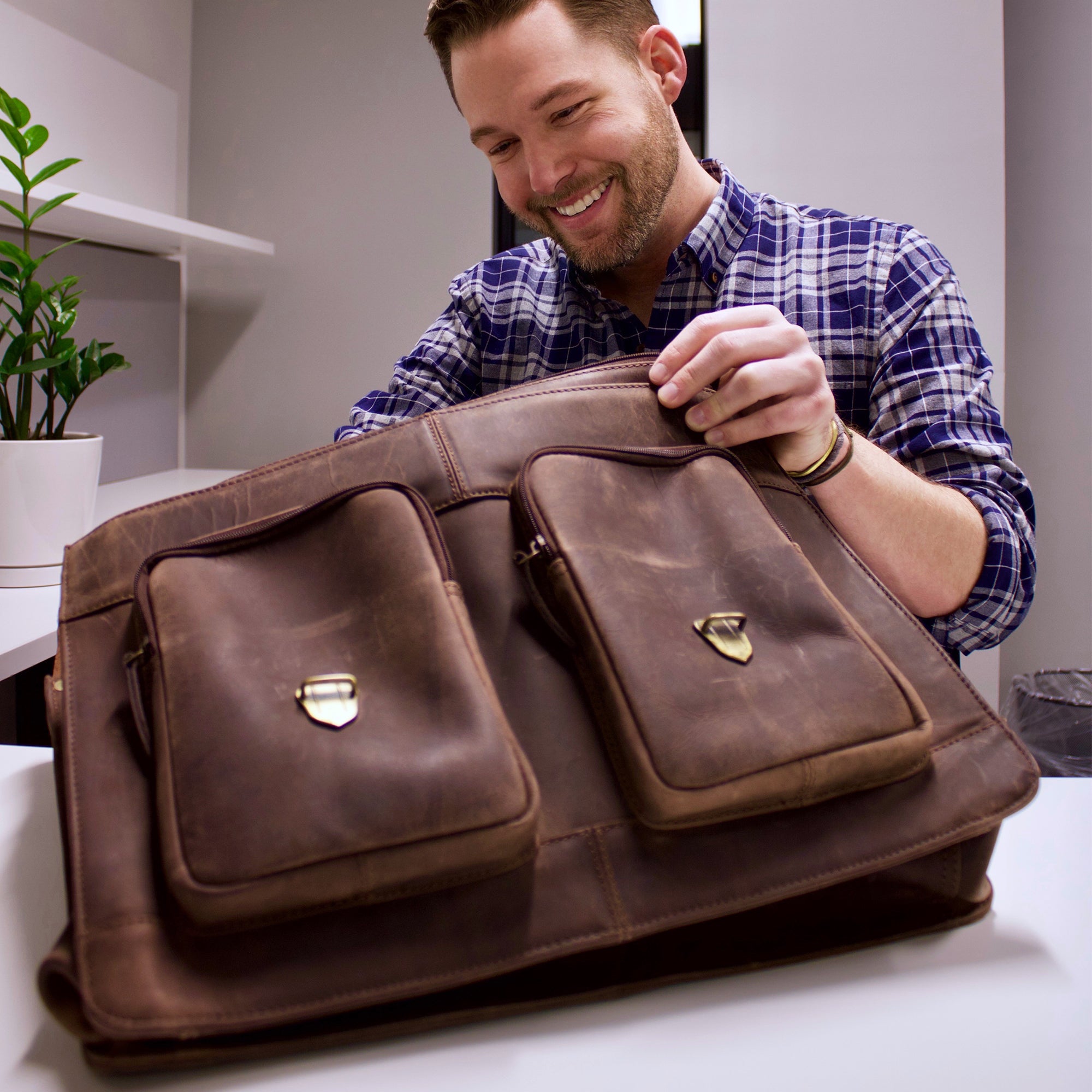
Leather Care and Maintenance
Taking care of your leather products is like nurturing a prized possession; it requires attention and care to ensure they last a lifetime.
Importance of Care
Proper care and maintenance not only extend the lifespan of leather products but also preserve their beauty and functionality.
Regular cleaning and conditioning help prevent dryness and cracking, keeping leather soft and supple.
Cleaning Techniques
When it comes to cleaning leather, less is often more.
For everyday maintenance, simply wiping leather with a soft, damp cloth can remove surface dirt and dust.
For tougher stains, mild soap or leather cleaner can be used, followed by a thorough drying with a clean cloth.
Conditioning and Protection
In addition to cleaning, conditioning leather is essential for maintaining its suppleness and luster.
Leather conditioner replenishes the natural oils in the leather, preventing it from drying out and becoming brittle.
Applying a protective coating, such as leather wax or cream, can also help repel water and stains, prolonging the life of your leather products.
Frequency of Care
The frequency of care depends on factors such as usage, climate, and the type of leather.
Leather products that are used daily may require more frequent cleaning and conditioning, while those used sparingly may only need occasional maintenance.
Leather in Fashion and Design
Leather has long been a staple in the world of fashion and design, adding a touch of luxury and sophistication to clothing and accessories.
Historical Significance
Throughout history, leather has been prized for its durability and versatility, making it a favored material for garments and adornments.
From ancient civilizations to modern-day fashion houses, leather has remained a symbol of status and style.
Contemporary Trends
In today's fashion landscape, leather continues to hold a prominent place, with designers incorporating it into their collections in innovative and unexpected ways.
From sleek leather messengers to statement-making leather backpacks, leather pieces are a perennial favorite on the runway and in street style.
Versatility in Style
One of the most appealing aspects of leather is its versatility in style.
Whether you prefer classic, timeless designs or avant-garde, edgy looks, there's a leather piece to suit every taste and aesthetic.
From Classic to Avant-Garde
In addition to its timeless appeal, leather also lends itself well to experimentation and creativity.
Designers are constantly pushing the boundaries of traditional leatherwork, exploring new textures, finishes, and techniques to create truly unique and innovative pieces.
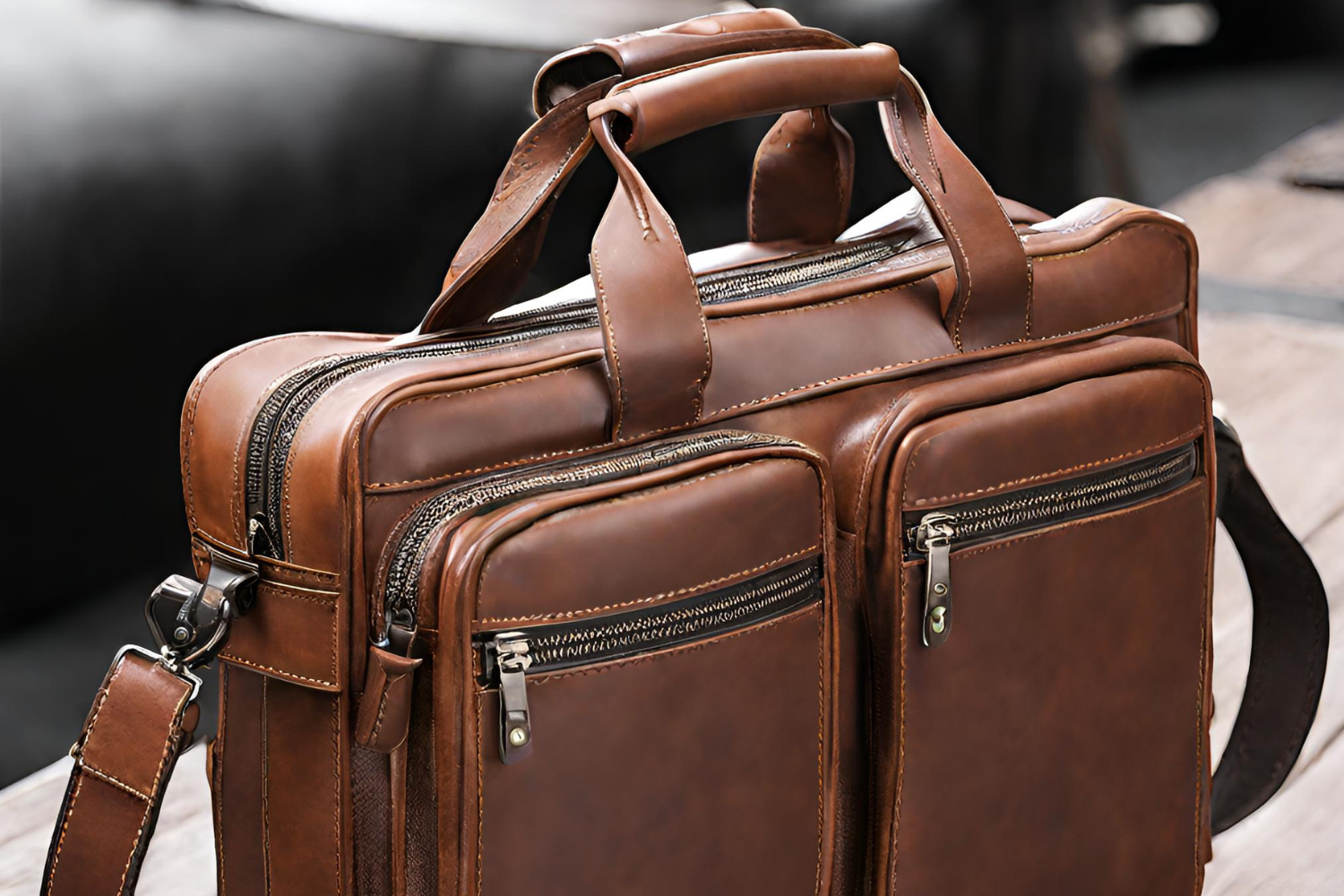
Leather Products
Leather products encompass a wide range of items, each crafted with care and precision to showcase the beauty and versatility of this remarkable material.
Bags and Wallets
Leather bags and wallets are typically the most common leather products.
Shoes
Leather shoes are a timeless wardrobe staple, prized for their comfort, durability, and style. From classic leather loafers to rugged leather boots or even a leather football, there's a pair of leather shoes for every occasion.
Jackets
Leather jackets are synonymous with cool and effortless style, adding a touch of edge to any outfit. Whether you prefer the classic look of a leather biker jacket or the sleek sophistication of a leather blazer, a well-crafted leather jacket is a must-have in any wardrobe.
Furniture
Leather furniture exudes luxury and elegance, making a statement in any home or office. From plush leather sofas to sleek leather chairs, leather furniture adds warmth and sophistication to any space.
Accessories
Leather accessories are the perfect finishing touch to any ensemble, adding a touch of refinement and personality. From leather belts and gloves to leather hats and bags, these accessories elevate any look with their timeless appeal.
Unique Properties
What sets leather products apart is not just their beauty, but also their durability and longevity. With proper care and maintenance, leather products can last a lifetime, becoming cherished heirlooms passed down through generations.
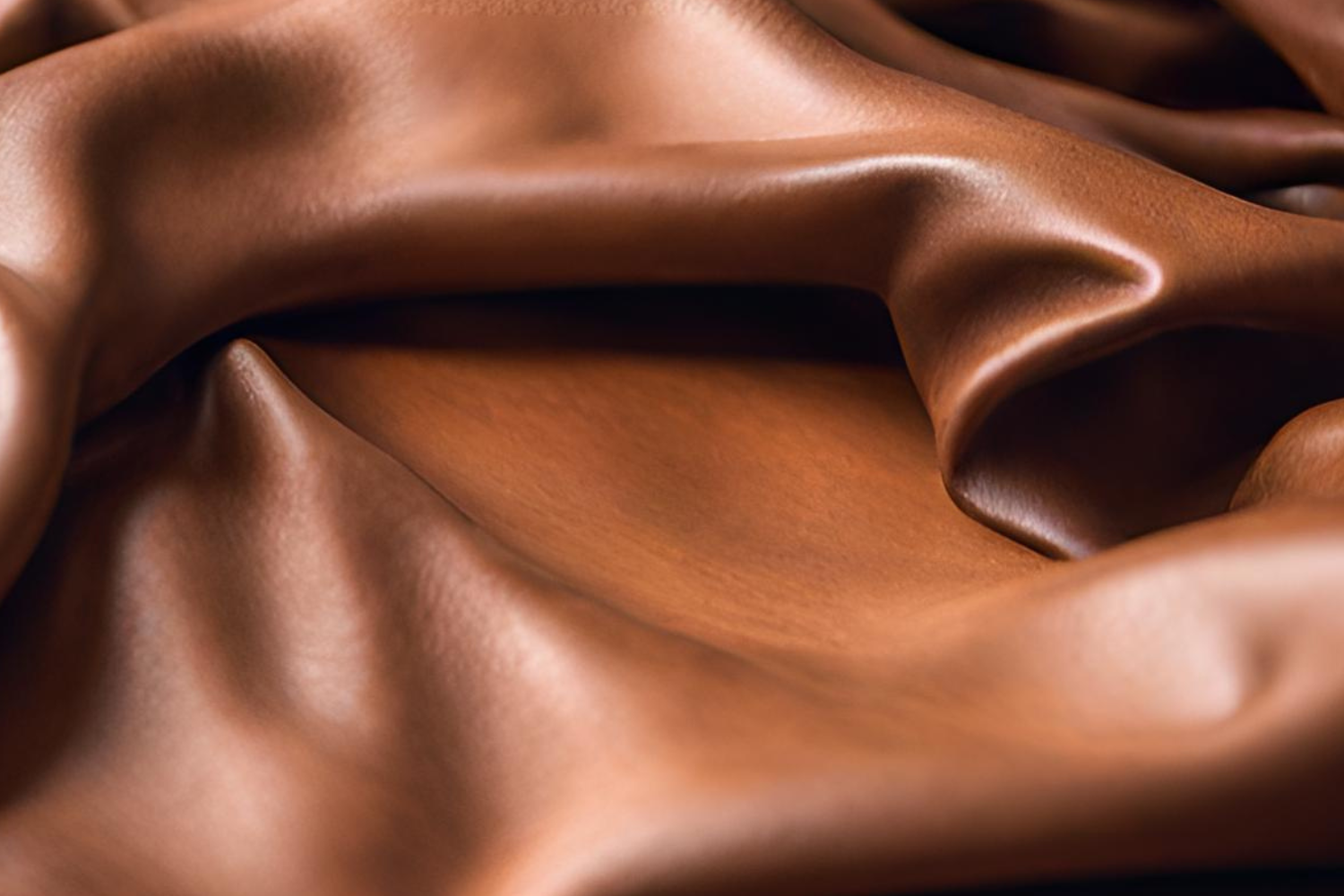
Common Misconceptions About Leather
Despite its popularity and ubiquity, leather is often surrounded by misconceptions and myths.
Addressing Myths
One common misconception is that leather is harmful to the environment.
While it's true that leather production can have environmental impacts, such as water pollution and deforestation, not all leather is created equal.
Many leather manufacturers are implementing eco-friendly practices, such as using vegetable-based tanning agents and reducing water usage, to minimize their environmental footprint.
Environmental Impact
Another misconception is that leather is not a sustainable material.
While it's true that leather production requires resources and energy, leather is actually a byproduct of the meat industry, making it a sustainable and eco-friendly choice.
By using hides that would otherwise go to waste, leather helps reduce waste and maximize the use of valuable resources.
Ethical Considerations
There are also ethical concerns surrounding leather production, particularly regarding animal welfare.
While it's true that animals may be raised and slaughtered for their hides, most leather is actually a by-product of the dairy industry.
Many leather manufacturers adhere to strict ethical standards and humane slaughter practices to ensure the welfare of the animals.
Furthermore, leather production provides livelihoods for millions of people around the world, supporting local communities and economies.

The Future of Leather
The future of leather holds both exciting innovations and daunting challenges.
Technological Advancements
Advancements in technology are paving the way for new frontiers in leather production and design.
From sustainable tanning methods to innovative uses of biotechnology, researchers and manufacturers are exploring new ways to create leather that is more eco-friendly and ethically produced.
Sustainability Initiatives
Sustainability initiatives are also shaping the future of leather.
Many companies are investing in sustainable practices, such as recycling leather scraps and reducing water usage, to minimize the environmental impact of leather production.
Challenges Ahead
Despite these innovations, the leather industry still faces challenges.
Balancing tradition with innovation, and meeting growing consumer demand while maintaining ethical and environmental standards, will be key challenges for the industry in the years to come.
It should be noted that the leather industry is almost wholly reliant on meat production.
PETA continues to push the meat industry for reform and any large scale changes would affect the leather industry.
By embracing innovation and addressing these challenges head-on, the leather industry can continue to thrive and evolve, providing consumers with high-quality, sustainable, and ethically produced leather products for generations to come.

Leather Alternatives
Leather alternatives offer a cruelty-free option for those seeking to avoid traditional leather products.
In addition to faux leather, which is made from materials like polyurethane or PVC, there is also a growing market for plant-based leather alternatives.
Vegan leather, also known as faux leather, is a type of synthetic leather made from non-animal materials.
It attempts to mimic the look and feel of real leather without the need for animal products, making it a popular choice among vegan and vegetarian consumers.
It should be noted that vegan leather and other types of fake leather will not be close to real leather in terms of durability. They also cannot develop a patina.
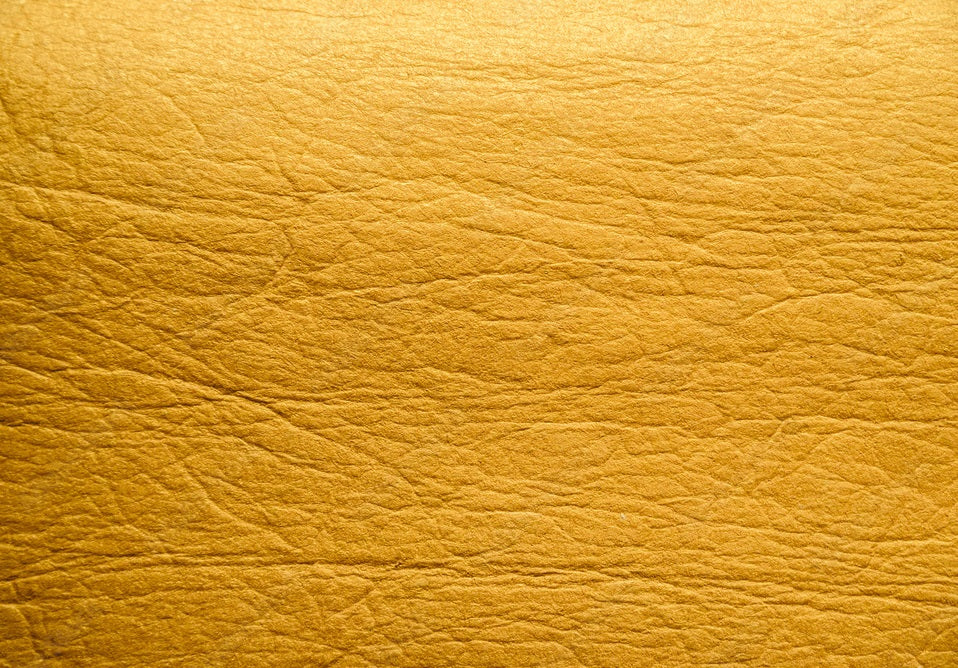
FAQs
1. What are the different types of leather?
There are several types of leather, each with its own characteristics and uses.
Full grain leather retains the outermost layer of the hide and showcases its natural grain and imperfections.
Top grain leather has been sanded or buffed to remove imperfections and create a smoother surface.
Other types of leather, such as corrected grain and bonded leather, are created using different processes and may not possess the same quality and durability as full grain or top grain leather.
2. How can I identify quality leather?
Quality leather can be identified by several factors. Look for tight grain, uniform color, and a pleasant smell.
High-quality leather should feel soft and supple to the touch, with no rough spots or inconsistencies.
Additionally, examine the stitching and craftsmanship of the product, as well-made leather goods typically have neat, even stitching and attention to detail.
3. Is leather environmentally friendly?
While leather production can have environmental impacts, it is considered a sustainable material.
Leather is a byproduct of the meat industry, so using hides that would otherwise go to waste helps reduce waste and maximize the use of valuable resources.
Additionally, many leather manufacturers are implementing eco-friendly practices, such as using vegetable-based tanning agents and reducing water usage, to minimize their environmental footprint.
4. How do I care for leather products?
Proper care and maintenance are essential for preserving the beauty and longevity of leather products.
Regular cleaning and conditioning help prevent dryness and cracking, keeping leather soft and supple.
Use a soft, damp cloth to wipe away surface dirt and dust, and apply a leather conditioner to replenish the natural oils in the leather. Avoid exposing leather products to excessive heat or moisture, as this can cause damage over time.
